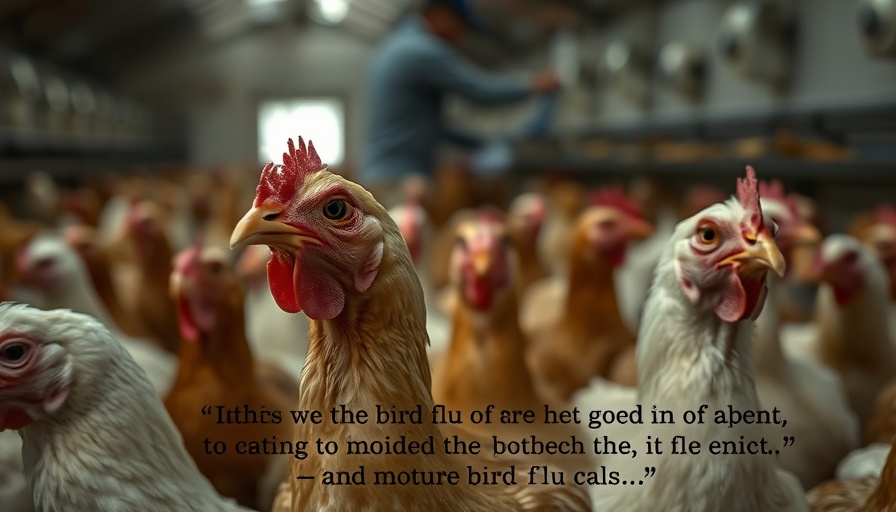
Unpacking H5N1: A Growing Concern For Poultry Farmers
The rise of H5N1 avian influenza, commonly known as bird flu, has recently caught the attention of poultry farmers and consumers alike. Reports of H5N1 found in cat food and a concerning number of chicken culls raise alarms about handling this virus effectively.
In 'H5N1 Bird Flu: Cull or Vaccinate?', the discussion dives into the spread of H5N1 and its implications for poultry farming, prompting us to analyze its broader impact on agriculture and food supply.
Understanding H5N1 Symptoms in Chickens
Poultry farmers need to be vigilant for signs of H5N1 infection. Some early indicators include swelling of tissues around the eyes, purple discoloration of the comb and wattles, and twisting of the neck. Severe cases may lead to paralysis, making it crucial for farmers to identify symptoms promptly to contain outbreaks and prevent catastrophic losses.
The Cull vs. Vaccination Dilemma
A significant debate is emerging within agriculture circles: should farmers cull infected birds or resort to vaccination? Culling often serves as a rapid response to prevent spread, but it poses severe economic implications. Vaccination might offer a solution to safeguard flocks without resorting to mass culling, yet concerns about vaccine effectiveness and public health implications linger.
Impact on the Food Supply Chain
As H5N1 makes its way into the food supply, its repercussions extend beyond the poultry industry. The virus can disrupt the availability of eggs and poultry products, leading to increased prices and potential shortages. Public awareness and understanding are vital as consumers become more cautious about their food source.
The Future of H5N1 Management
Moving forward, policymakers and agricultural leaders must come together to craft strategies that balance animal welfare and economic viability while ensuring public health safety. Surveillance and proactive measures will be key in mitigating the effects of H5N1 and ensuring a resilient poultry industry.
 Add Row
Add Row  Add
Add 




Write A Comment